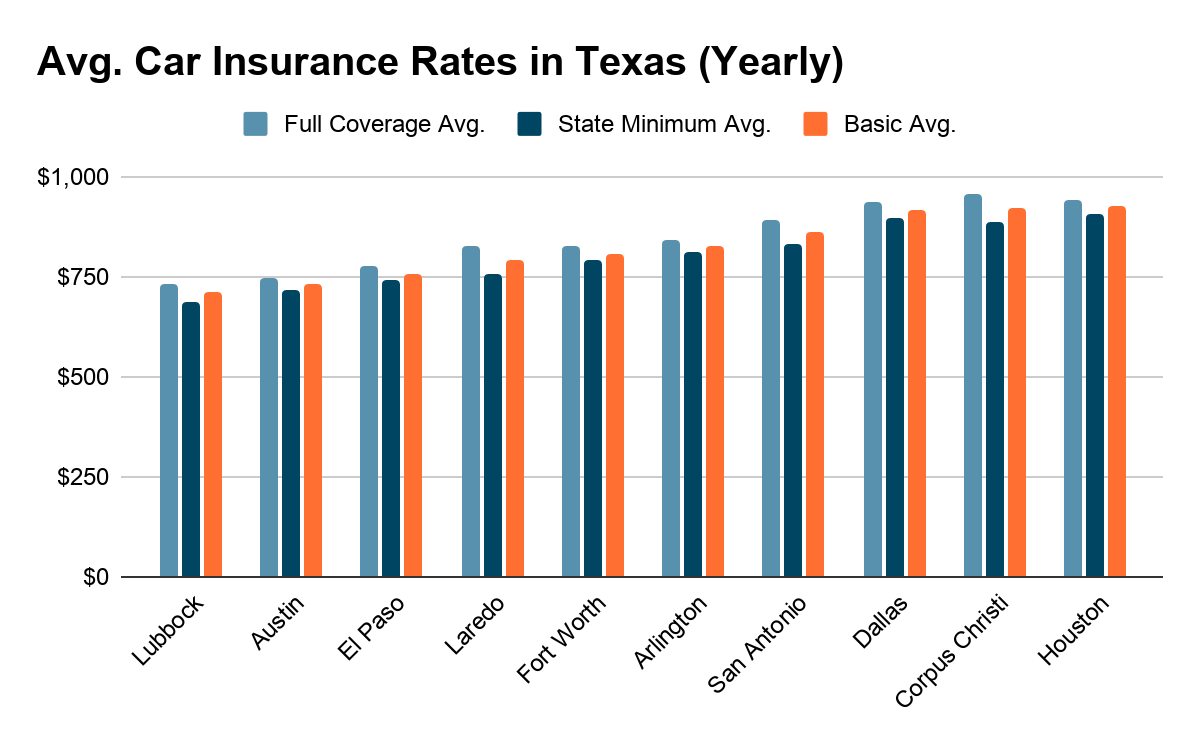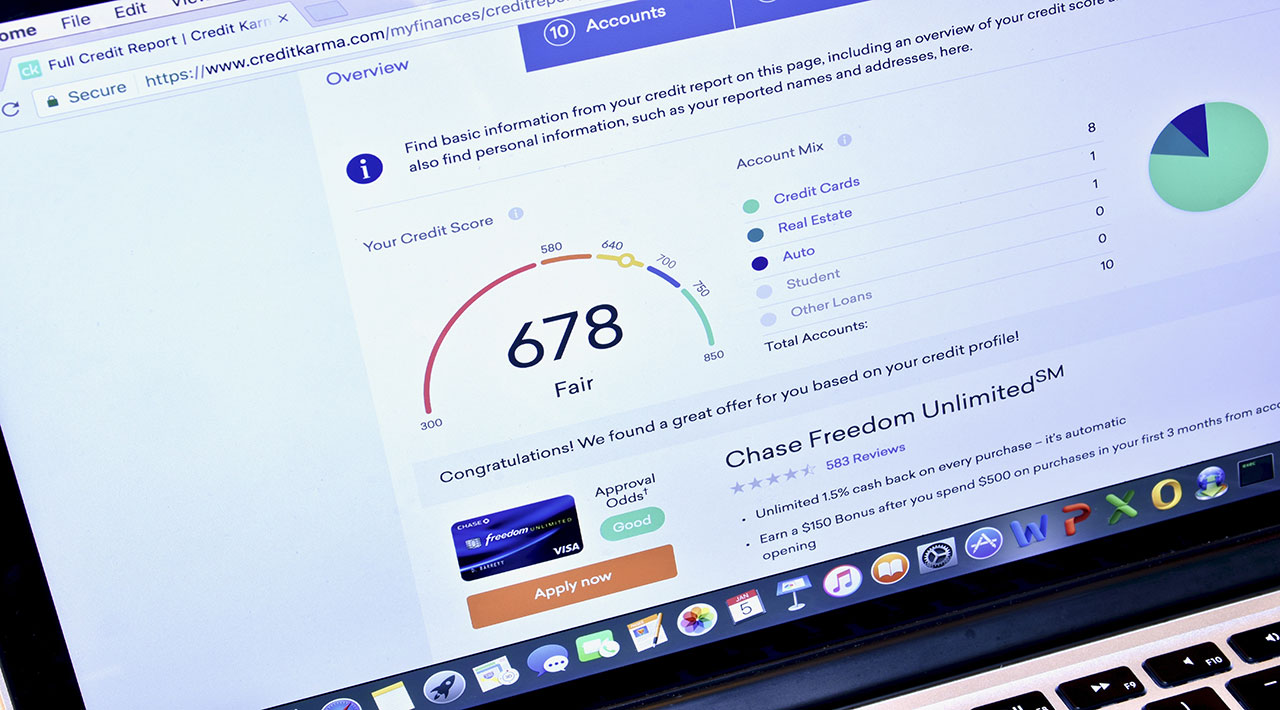

Finance
How To Sell Auto Insurance
Published: October 6, 2023
Learn effective strategies for selling auto insurance and boosting your finance career. Get expert tips on generating leads and closing deals.
(Many of the links in this article redirect to a specific reviewed product. Your purchase of these products through affiliate links helps to generate commission for LiveWell, at no extra cost. Learn more)
Table of Contents
- Introduction:
- Step 1: Understanding the Auto Insurance Market
- Step 2: Identifying Your Target Audience
- Step 3: Building Your Insurance Sales Skills
- Step 4: Developing a Marketing Strategy
- Step 5: Creating Effective Insurance Sales Presentations
- Step 6: Overcoming Objections and Closing the Sale
- Step 7: Providing Excellent Customer Service
- Step 8: Retaining Customers and Generating Referrals
- Conclusion:
Introduction:
Welcome to the world of auto insurance sales! Selling auto insurance can be a rewarding and lucrative career choice, but it requires a solid understanding of the market, excellent sales skills, and effective marketing strategies. Whether you’re a seasoned insurance agent or just starting out in the industry, this comprehensive guide will equip you with the knowledge and techniques to succeed in selling auto insurance.
Auto insurance is a must-have for vehicle owners, providing financial protection against accidents, theft, and other unforeseen events. With millions of drivers on the roads, the demand for auto insurance is always high. However, the competitive nature of the market means that selling auto insurance requires expertise and a strategic approach.
In this article, we’ll take you through a step-by-step process to help you navigate the auto insurance sales landscape. We’ll cover everything from understanding the market and identifying your target audience to building your sales skills and developing effective marketing strategies. We’ll also explore how to create compelling insurance sales presentations, overcome objections, close sales, and provide exceptional customer service.
The ultimate goal is not just to make a sale, but to build long-term relationships with your clients and generate referrals. Providing excellent customer service and going above and beyond to meet your clients’ needs will set you apart from the competition and contribute to your success in the auto insurance industry.
So, if you’re ready to dive into the world of auto insurance sales and discover how to sell policies effectively, let’s get started with step one: understanding the auto insurance market.
Step 1: Understanding the Auto Insurance Market
Before you dive into selling auto insurance, it’s crucial to have a solid understanding of the market. This will help you identify customer needs and tailor your approach accordingly. Here are some key aspects to consider:
- Types of Auto Insurance: Familiarize yourself with the different types of auto insurance coverage available, such as liability coverage, comprehensive coverage, collision coverage, and uninsured/underinsured motorist coverage. Understanding the nuances of each type will enable you to educate and guide your clients effectively.
- Legal Requirements: Research the specific auto insurance requirements mandated by the laws of your region or country. This includes the minimum liability coverage limits and any additional requirements, such as personal injury protection or no-fault insurance. This knowledge will help you advise clients on the necessary coverage to meet legal obligations.
- Market Trends: Stay updated on the latest market trends and changes in the auto insurance industry. This includes factors such as emerging technologies (e.g., self-driving cars) or shifting consumer preferences. By staying informed, you can adapt your sales strategies to align with current market demands.
- Competitor Analysis: Research and analyze your competitors in the auto insurance industry. Identify their strengths, weaknesses, pricing strategies, and unique selling propositions. This information will empower you to differentiate yourself and offer competitive insurance packages to meet customers’ needs.
- Customer Demographics: Understand the demographics of your target audience. Consider factors such as age, location, occupation, and income level. This knowledge will assist you in crafting tailored marketing messages and products that resonate with your potential customers.
By taking the time to understand the auto insurance market thoroughly, you’ll be equipped with valuable insights that will guide your sales approach. This knowledge will not only boost your credibility but also help you connect with customers on a deeper level, making it easier to fulfill their unique insurance needs.
Step 2: Identifying Your Target Audience
To effectively sell auto insurance, it’s essential to identify your target audience. By understanding their specific needs, preferences, and pain points, you can tailor your sales approach and offer customized solutions. Here’s how to identify your target audience:
- Research and Analysis: Conduct market research to gain insights into the demographics, behaviors, and characteristics of your potential customers. This can include factors such as age, gender, marital status, occupation, and income level. Use tools like surveys, focus groups, and online analytics to gather data and analyze it to identify common trends and patterns.
- Segmentation: Once you have gathered relevant data, segment your target audience based on specific criteria. This can be done by grouping them into distinct categories, such as young drivers, families, or seniors. By segmenting your target audience, you can develop targeted marketing messages and personalized insurance packages that address their unique needs.
- Customer Personas: Create customer personas that represent your target audience segments. A customer persona is a fictional representation of your ideal customer and includes details such as their age, occupation, lifestyle, and pain points. This exercise helps you understand your audience at a deeper level and craft marketing messages that resonate with them on a personal level.
- Needs and Pain Points: Identify the insurance needs and pain points that your target audience faces. For example, young drivers may be concerned about high premiums, while families may prioritize comprehensive coverage for their vehicles. By understanding their specific needs, you can position yourself as an advisor and provide tailored solutions that address their concerns.
- Competitor Analysis: Analyze what your competitors are offering to your target audience. Identify any gaps in their offerings or areas where you can provide a unique value proposition. This will give you a competitive advantage and help you differentiate your insurance products.
By identifying your target audience, you can refine your sales and marketing strategies to align with their specific needs. This focused approach will not only attract the right customers but also increase the likelihood of converting leads into sales. Remember, the key is to develop a deep understanding of your target audience, anticipate their needs, and position yourself as their trusted insurance advisor.
Step 3: Building Your Insurance Sales Skills
To excel in selling auto insurance, it’s crucial to continuously build and refine your sales skills. Here are some key areas to focus on:
- Product Knowledge: Develop a thorough understanding of the auto insurance products you offer. Familiarize yourself with coverage options, policy terms and conditions, and pricing structures. Being knowledgeable about your products instills confidence in your clients and allows you to effectively communicate the value and benefits of your offerings.
- Effective Communication: Enhance your communication skills to engage and connect with potential clients. Practice active listening to understand their needs and concerns. Clearly convey complex insurance concepts in simple terms, avoiding jargon that may confuse or overwhelm customers. Adopt a friendly and approachable demeanor that puts clients at ease.
- Negotiation Techniques: Master the art of negotiation to secure the best insurance deals for your clients. Learn how to present compelling arguments, address objections, and find mutually beneficial solutions. Develop strong persuasion and influencing skills to convince clients of the value and benefits of your insurance policies.
- Relationship Building: Focus on building strong relationships with your clients based on trust, integrity, and personalized service. Show genuine care for their needs and offer ongoing support throughout the insurance process. Regularly follow up with clients to provide updates, address concerns, and offer additional coverage options when appropriate.
- Time Management: Develop effective time management skills to prioritize tasks and maximize productivity. Set clear goals and daily targets to ensure you allocate time appropriately to prospecting, client meetings, and administrative tasks. Use technology tools and systems to streamline processes and stay organized.
- Continuous Learning: Stay updated on industry trends, changes in regulations, and new insurance products and services. Attend training sessions, workshops, and conferences to enhance your knowledge and skills. Engage in professional development opportunities to stay ahead in the insurance industry.
Building your insurance sales skills is an ongoing process. Continually evaluate your performance and seek feedback from clients and colleagues to identify areas for improvement. By honing your skills in these key areas, you’ll become a trusted insurance professional capable of effectively meeting the needs of your clients and achieving sales success in the competitive auto insurance market.
Step 4: Developing a Marketing Strategy
A well-crafted marketing strategy is essential for reaching your target audience and generating leads in the auto insurance industry. Here are key steps to develop an effective marketing strategy:
- Define Your Target Market: Use the insights gathered in Step 2 to clearly define your target market. Identify the demographics, interests, and needs of your ideal customers.
- Set Clear Goals: Determine your marketing goals, whether it’s increasing brand awareness, generating leads, or boosting sales. Establish specific, measurable, achievable, relevant, and time-bound (SMART) objectives to guide your marketing efforts.
- Choose the Right Channels: Select the marketing channels that align with your target audience and goals. Consider a mix of online and offline channels, such as social media, email marketing, content marketing, search engine optimization, and traditional advertising methods.
- Create Compelling Content: Develop engaging content that educates, informs, and provides value to your target audience. Use blogs, infographics, videos, and guides to showcase your expertise and build trust with potential customers.
- Optimize for SEO: Implement search engine optimization (SEO) strategies to improve your website’s visibility in search engine results. Research and use relevant keywords, optimize your website structure, and create authoritative content to attract organic traffic.
- Utilize Social Media: Leverage social media platforms to engage with your target audience, share valuable content, and build brand awareness. Determine the platforms where your audience is most active and develop a social media strategy accordingly.
- Invest in Paid Advertising: Consider utilizing paid advertising channels like Google Ads or social media ads to increase your reach and target specific demographics. Monitor and optimize your campaigns to ensure a high return on investment (ROI).
- Track and Analyze Results: Implement tracking mechanisms to monitor the success of your marketing efforts. Analyze key metrics such as website traffic, conversion rates, and lead generation. Use data to refine your strategy and make informed marketing decisions.
Remember, your marketing strategy should be flexible and adapt to changes in the market and customer behavior. Regularly evaluate the effectiveness of your marketing activities, experiment with new approaches, and refine your strategy to stay ahead of the competition in the auto insurance industry.
Step 5: Creating Effective Insurance Sales Presentations
A well-crafted sales presentation is a powerful tool for engaging potential clients and persuading them to choose your auto insurance. Here are some essential steps to create effective insurance sales presentations:
- Know Your Audience: Tailor your sales presentation to the specific needs and preferences of your audience. Research their demographics, interests, and pain points to customize your message.
- Highlight Unique Selling Points: Identify the unique selling points of your insurance products and services. Showcase how your offerings stand out from competitors and provide added value to customers.
- Begin with a Compelling Opening: Grab your audience’s attention from the start with a compelling opening statement or story. Make it relatable, engaging, and focused on the benefits of your insurance solutions.
- Focus on Benefits, Not Features: Emphasize the benefits of your insurance policies rather than listing technical features. Explain how the coverage will protect clients, save them money, or provide peace of mind.
- Use Visuals and Examples: Incorporate visuals such as charts, graphs, and images to support your message. Use real-life examples and success stories that illustrate how your insurance has helped previous clients.
- Address Concerns and Objections: Anticipate and address common concerns or objections that potential clients may have. Prepare responses and provide clear explanations to alleviate any doubts they may have.
- Create a Call-to-Action: Clearly communicate the next steps that potential clients should take. Whether it’s scheduling a consultation or signing up for a policy, guide them towards taking action.
- Practice and Refine: Rehearse your sales presentation to ensure a confident and smooth delivery. Seek feedback from mentors or colleagues and make necessary adjustments to improve your presentation skills.
- Follow up: After your sales presentation, follow up with potential clients to answer any remaining questions and address concerns. Personalized follow-up communications show your dedication and commitment to serving their needs.
Remember, a successful sales presentation is not just about presenting information; it’s about connecting with potential clients and demonstrating the value and benefits of your auto insurance. By creating engaging presentations and delivering them with confidence, you’ll increase your chances of converting prospects into loyal customers in the competitive auto insurance market.
Step 6: Overcoming Objections and Closing the Sale
While presenting your auto insurance offerings, potential clients may raise objections or have concerns that need to be addressed. Overcoming objections and effectively closing the sale requires a strategic approach. Here’s how to handle objections and successfully close the deal:
- Listen and Empathize: When a potential client raises an objection, actively listen and empathize with their concerns. Demonstrate that you understand their viewpoint and genuinely care about meeting their needs.
- Clarify and Ask Questions: Seek clarification by asking open-ended questions to uncover the root cause of their objection. This will provide you with valuable insights and help you address their concerns more effectively.
- Provide Solutions: Once you understand the objection, offer specific solutions that address the client’s concerns. Explain how your insurance policies can overcome their challenges or meet their requirements.
- Highlight Benefits: Emphasize the unique benefits of your insurance offerings that directly address the objections raised. Focus on how your policies provide value, convenience, and peace of mind to the client.
- Show Social Proof: Share success stories or testimonials from satisfied clients who had similar concerns or objections. This social proof will help build trust and credibility, alleviating the client’s doubts.
- Utilize Discounts and Incentives: If applicable, offer discounts, incentives, or special packages to overcome objections related to pricing or affordability. Highlight the long-term savings or additional benefits that your policies provide.
- Reiterate Value: Reinforce the value of your offerings throughout the conversation. Remind the client of the protection, financial security, and peace of mind that your insurance policies can provide in the event of an accident or loss.
- Ask for the Sale: Once you have addressed the objections and provided satisfactory answers, it’s time to ask for the sale. Use a clear and confident closing statement and guide the client towards taking action.
- Follow-Up: After closing the sale, follow up with the client to confirm the details, provide any additional assistance, and express gratitude for their business. This builds strong relationships and fosters customer loyalty.
Remember, objections are a natural part of the sales process, and overcoming them effectively demonstrates your expertise and commitment to meeting the client’s needs. By addressing objections head-on and consistently showcasing the value of your auto insurance, you can confidently close the sale and secure loyal customers in the competitive marketplace.
Step 7: Providing Excellent Customer Service
In the auto insurance industry, providing excellent customer service is crucial for client satisfaction, retention, and generating positive referrals. Here are some key steps to provide exceptional customer service:
- Be Responsive and Accessible: Ensure that you are available to address client inquiries, concerns, and claims promptly. Provide multiple channels of communication, such as phone, email, and live chat, and respond to queries in a timely and professional manner.
- Build Relationships: Foster strong relationships with your clients by taking a personalized approach. Remember details about their policies, interests, and concerns to demonstrate that you genuinely care about their well-being.
- Offer Proactive Support: Anticipate your clients’ needs and offer proactive assistance. Provide reminders for policy renewals, conduct policy reviews, and offer relevant recommendations to ensure that their coverage is up to date and meeting their current needs.
- Provide Clear Communication: Clearly communicate policy details, coverage limits, and any changes or updates. Use plain language and avoid technical jargon to ensure that clients understand their insurance policies and feel confident in their coverage.
- Handle Claims Efficiently: Guide clients through the claims process, assisting them with any necessary paperwork and documenting their information accurately. Be proactive in following up on claims to ensure a smooth and efficient resolution.
- Go the Extra Mile: Exceed client expectations by going above and beyond. This could include providing personalized policy recommendations, offering discounts where applicable, or assisting with any additional insurance needs they may have.
- Solicit and Act on Feedback: Regularly ask for feedback from your clients to understand their experience and identify areas for improvement. Act on feedback to continuously enhance your customer service and overall client satisfaction.
- Train and Empower Staff: Ensure that your staff is trained to deliver excellent customer service. Empower them to make decisions and handle client inquiries with confidence. Provide ongoing training and professional development opportunities to stay ahead in the industry.
- Show Gratitude and Appreciation: Express gratitude to your clients for choosing your insurance services. Send personalized thank-you notes, offer loyalty rewards, or organize client appreciation events to demonstrate your appreciation for their business.
Providing excellent customer service not only creates a positive experience for your clients but also enhances your reputation and sets you apart from your competitors. By prioritizing their needs, being responsive, and offering proactive support, you can build long-lasting relationships and generate referrals, contributing to your success in the auto insurance industry.
Step 8: Retaining Customers and Generating Referrals
Retaining customers and generating referrals are crucial for long-term success in the auto insurance industry. Happy and satisfied clients not only stay with you but also become advocates for your business. Here are some strategies to retain customers and generate valuable referrals:
- Provide Exceptional Service: Continuously strive to exceed customer expectations by delivering exceptional service at every touchpoint. Be proactive, responsive, and attentive to their needs. This will foster loyalty and increase the chances of them renewing their policies with your agency.
- Communicate Regularly: Stay in touch with your clients on a regular basis. Send personalized emails, newsletters, or updates to keep them informed about relevant industry news and changes that may impact their coverage.
- Offer Discounts and Incentives: Reward customer loyalty by offering discounts on future premiums or providing exclusive offers to valued clients. This not only encourages them to stay with your agency but also motivates them to refer others to your services.
- Request Feedback: Regularly ask for feedback from your clients to understand their level of satisfaction. Use their input to improve your services and address any concerns or issues they may have.
- Implement a Referral Program: Create a referral program that incentivizes clients to refer friends, family, or colleagues to your agency. Offer discounts, rewards, or special perks to both the referring client and the new customer they bring in.
- Provide Outstanding Claim Experiences: Handle claims efficiently and with empathy. Always prioritize the best interests of your clients and provide support throughout the claims process. A positive claim experience can greatly enhance customer satisfaction and loyalty.
- Engage on Social Media: Actively engage with your clients on social media platforms. Respond to their comments, answer their questions, and share relevant and informative content that builds trust and reinforces your expertise.
- Send Personalized Follow-ups: After a policy renewal or significant interaction, send personalized follow-ups to show your appreciation and reinforce the value your agency provides. Demonstrating that you genuinely care about their well-being builds customer loyalty.
- Participate in Community Involvement: Engage with your local community by participating in events, sponsorships, or charitable initiatives. This will help strengthen your agency’s reputation and increase brand visibility, leading to potential referrals.
- Continuously Improve: Regularly evaluate your processes and services to identify areas for improvement. Embrace customer feedback and implement necessary changes to enhance the overall customer experience.
By focusing on retaining customers and generating referrals, you can build a strong and sustainable client base in the auto insurance industry. Happy clients who feel valued and supported will not only renew their policies but also refer others to your agency, helping you grow your business and reputation. Remember, the key is to consistently provide exceptional service and go above and beyond to exceed customer expectations.
Conclusion:
Congratulations! You have now completed the journey of understanding how to sell auto insurance effectively. By following the steps outlined in this comprehensive guide, you have gained the knowledge and skills necessary to navigate the competitive auto insurance market and become a successful insurance agent.
Throughout this guide, we explored the importance of understanding the auto insurance market, identifying your target audience, building your sales skills, developing a marketing strategy, creating effective sales presentations, overcoming objections, providing excellent customer service, retaining customers, and generating referrals.
Remember, selling auto insurance requires a combination of expertise, strong communication skills, and a customer-centric approach. It’s essential to continuously adapt to market trends, refine your sales techniques, and stay up to date with industry developments.
By providing exceptional customer service, you can foster long-lasting relationships with your clients, leading to customer retention and increased referrals. Your dedication to meeting their needs and going above and beyond will set you apart from competitors and contribute to your success in the industry.
Always remember to stay informed and continue to enhance your skills through ongoing learning and professional development. The auto insurance industry is constantly evolving, and by staying ahead of the curve, you can remain competitive and serve your clients to the best of your abilities.
With your newfound knowledge and skills, you are well-equipped to embark on your journey as a successful auto insurance sales professional. Embrace the opportunities, challenges, and rewards that come with this exciting industry, and may your career be filled with continued growth and prosperity!














